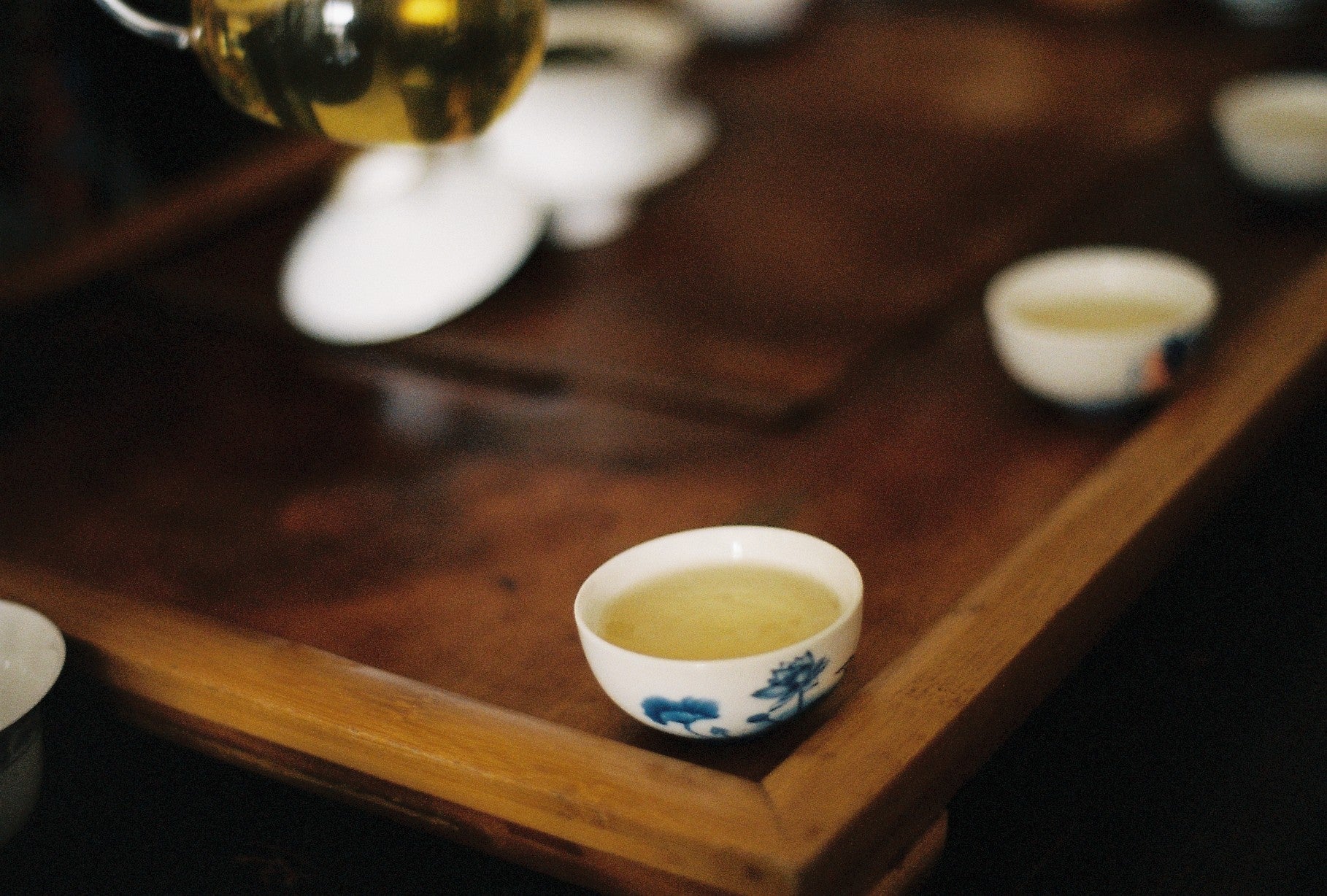
How to Brew Tea Gongfu Style
Dim the lights. Put on some good music. Clear your table/desk/floor/altar. Remove your clothes. Cast aside your errant thoughts.
It's time to get out the stash and dose yourself up for a nice ol' session, like a proper dependent. This guide will detail how to brew tea in what is known as 'gongfu style', or 'gongfu cha', a loosely defined brewing approach used the world over by hardcore tea junkies like us.
Making tea this way can sometimes seem overly complicated, but here's how we do it KUURA style: minimum bullshit, maximum delish.
The key concepts are using a relatively small volume teapot or gaiwan, using a high ratio of leaves to water, steeping for short amounts of time, and steeping the tea over and over again until all the flavour is gone. Good tea brewed this way can easily yield many many cups of liquor before the flavour dies out.
EQUIPMENT
- Tea
- Water
- Kettle
- Small teapot or gaiwan
- Scales
- Cup(s)
- Notepad
METHOD
Ready?
First, we need to select a brewing vessel appropriate to how many people are drinking tea. If you are solo or with one other, the 80-100ml range works best. If you're brewing for many, getting a bigger teapot is definitely worthwhile.
You can brew from the teapot straight into the cup(s), but a pitcher (called a gong bei or cha hai, fairness cup/share pitcher) is useful for a few reasons. If you have more than one person it makes it much easier and less messy to distribute the tea between peoples cups, and it also means everyone is drinking the same brew, rather than the first cup being weak and the last cup being strong if pouring from cup to cup directly.
It's also nice to have drinking temperature tea in your cup, and more tea in the pitcher, so you can keep constantly topped up.
Now, boil your kettle. Most teas do well with water that is as hot as possible, in order to get as much as possible out of them. Some teas might do better with a bit cooler; it really depends on the tea and your tastes. Here at KUURA we just boil everything.
The water you use is also very important! You want soft, clean water. Your tap water might not be enough to get the best flavour out of your tea - read all about water here and here.




For our 100ml brewing vessel, we are going to use 7.5g of tea. As a general starting point, using 1 gram of tea per 10-15ml of brewing water should give a good strength.

Pre-heat all your tea ware with boiling water. This helps to sterilize and get rid of any dust, but most importantly will ensure you don't lose too much temperature to cold tea ware when you start brewing. Cold tea ware can easily leach 20 degrees C from your boiled brewing water very quickly, leading to lacklustre, weak tea.
For compressed teas such as puer, its a good idea to try and gently break apart the chunk of tea into smaller pieces for more even brewing and flavour extraction. Don't worry too much about a few broken leaves, but try not to turn everything to dust either.
For many teas it's a good idea to give the tea a quick rinse. Cover the tea in boiling water and then discard quickly. This serves to get rid of any dust or small tea particles and open up the tea for brewing so that your first infusion has a fuller flavour.
Fragrance is a big part of tea; have a smell of the lid of your teapot, and especially of the glass or cup/pitcher after you pour the rinse out of it. You get a very different aroma from the liquor once it has left the vessel than if you were to smell the liquid itself.
Now comes the first hit; depending on the tea, infuse it for 5-15 seconds or so. Some teas like white tea, or ripe puer, can do with longer steep times. It really depends on the tea, there's no hard and fast rules. Just experiment and see what works best.
This is part of the beauty of brewing tea this way - you can adjust the steeping times as you go through the session.
If the tea is too weak and lacking flavour, push the steep a bit longer. If it is still too weak, you can always add some more tea.
Conversely, if it's tasting too strong, bitter, or astringent, just cut the time back a little. If it is way too strong, take out some leaf and try again.
Take your time and enjoy yourself. If you are so inclined, take a couple of notes on what you do throughout the session and what results you get. This will help you dial in for future sessions to a strength you like best.

Keep steeping the tea until there's no flavour left, or you reach enlightenment, whichever comes first. Many good teas will last for multiple infusions this way; anywhere from 5 to 20+.
Generally, you would increase the length of your steeps with each subsequent infusion in order to keep drawing out the same amount of flavour.
Again, there are no set rules: as an example with the tea used in the pictures, our first steeps were in the sub 20 second range, before exponentially increasing to 30 seconds, 45 seconds, 1 minute, 2 minutes, 3 minutes, 5 minutes...
You can time your tea meticulously or you can sling it cowboy style. We don't judge. We tend to be pretty lazy and just steep as we feel at the time. Most tea has a fairly large range of brewing time where it will taste good, especially after a couple of steeps. Don't sweat over it. Just play around and get the strength to where you like it.


